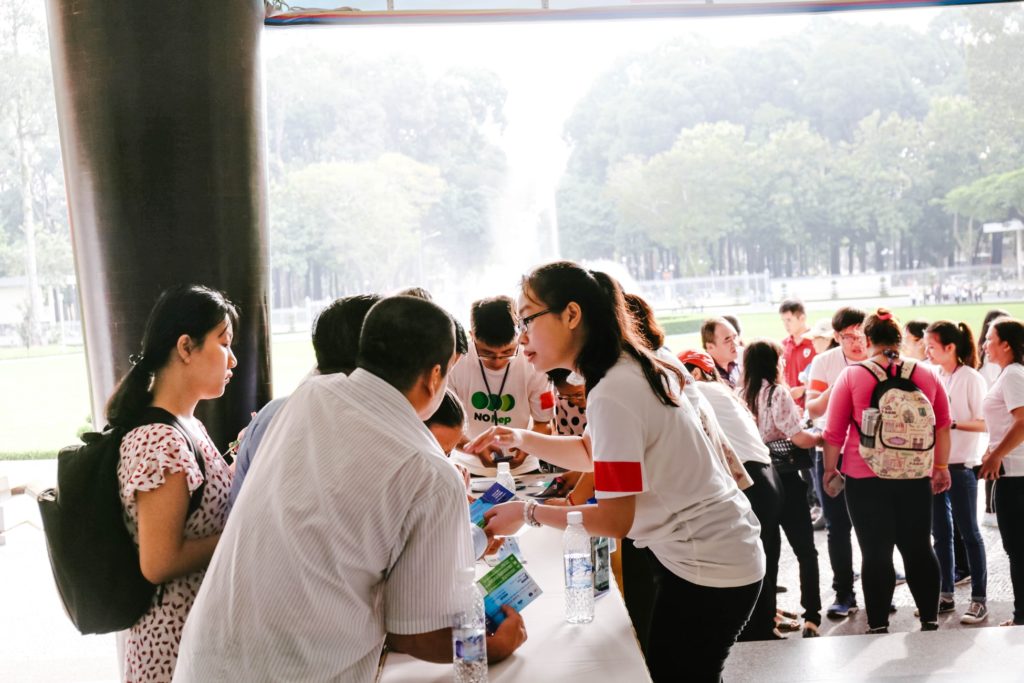The pandemic of 2020 affected businesses across the globe in many different and sometimes drastic ways. International schools were no different with many closures and new ways to do things needing to being put in place very quickly. The school cafeteria is different from the regular cafeteria, often simply due to the requirement of getting lots of students through in a short space of time.
- How do you do this with the same space and time constraints that you had before the pandemic?
- How do you create social distance where necessary?
- How do you keep things extra hygienic?
- How can you maintain or even decrease the lunch line?
- How do you convey a safe cafeteria environment to the school community?
Go Cashless
There has never been a better time to go cashless. It’s a difficult transition to make, there always seems to be that one exception that prevents the move. Once you manage to transition to a cashless environment however, there are many benefits to be had. The hygiene benefits alone can make this transition much more appealing a proposition now that parents and families are hyper aware of how viruses can spread. Moving cash away from the cafeteria environment completely can not only drastically speed up the point of sale lines, but also remove the need for cafeteria administrators to handle cash and manage point of sale floats.
No more end of shift, balancing floats and wondering where that 17 cents has gone! This speed increase at the point of sale may just be the only one that’s required to get a “COVID-restrained” cafeteria flowing again. Dedicated cash accepting stations placed in strategic areas of the campus can manage the bulk of this work or even simply creating a process at the school office for handling cash or giving guests a lunch card can be all that’s required.
Time for RFID
If you don’t already have Id cards, now might be the time to invest. It doesn’t have to be as complex and expensive as some vendors would have you believe. There are many platforms for managing the cards, assigning profiles and access rights. Its worthwhile spending some time shopping around to make sure you’re not spending more than you need to. Check the type of card to see if its commonly compatible with other readers. If your school has already invested in fingerprint technology, this will almost certainly come back at some point, but what do you do in the meantime?
RFID Cards have been used for authentication for an extremely long time. It’s a proven technology. With the advancement of RFID technology, cards can be scanned at a greater range. This means that it is possible to have very fast identification with zero contact. A definite advantage in tackling the social distancing issue. If you can make the switch to RFID cards for student identification, the cashless cafeteria works at full speed. The line is quicker and not as long or bunched up thus improving social distance and the flow through the cafeteria.
Encourage Pre-Ordering
Buffet style dining and relaxed seating arrangements may have to be put on hold until the pandemic passes.
Until then it’s probably a good idea to re-organize the cafeteria layout and the process of delivering meals. Students making decisions about which meal they want “at the cafeteria” or “in the line” can cause slow downs and unwanted queues. This can prevent you from re-organizing the seating plan the way you need to.
If you encourage families to pre-order meals in advance, the time taken to make those choices is removed from the cafeteria completely. This helps you get more students through the limited space in a shorter time. Taking payments at the point of order instead of in the cafeteria can also contribute to a faster line.
Once you have pre-orders in the kitchen, you have time to prepare and label meals in advance of the lunch rush. This means that the time spent in the cafeteria can be used to ensure students get chance to eat and orders in your system can be completed/finalized.
Critical to parent ordering is making the ordering process as simple and easy for families to do as possible. This sounds straight forward in principle but is often overlooked.
Here are some key things to consider:
- Incentivise ordering by offering meal plans, discounts or subscriptions.
- Structure the price points so that they are appropriate for the grades
- Organize the menu choices and options so that they are simple and obvious.
- Ensure you cover the required spectrum of dietary preferences.
- Publish an ordering horizon that is neither too short nor too long.
- Get feedback on the menus and engage the community.

Covid-19 has pushed us all to reconsider the way we work and the tools we use. Now is possibly the best time to make those bigger changes that perhaps weren’t possible or conceivable before the pandemic.

